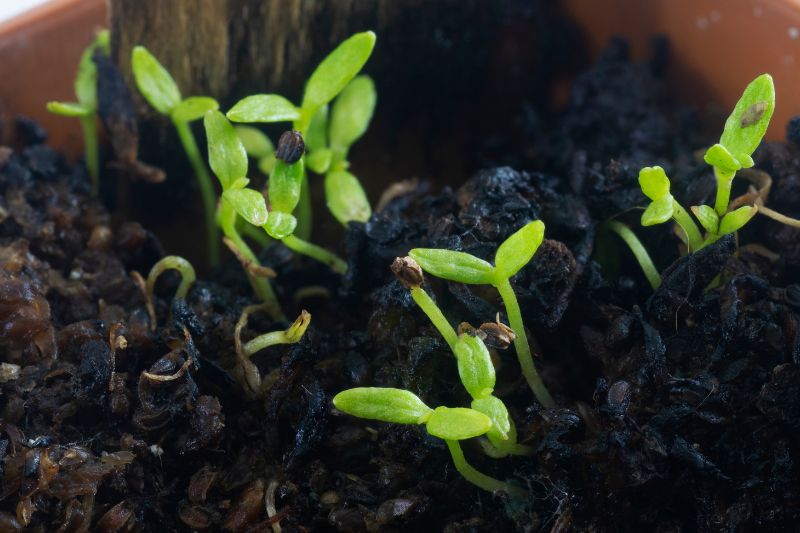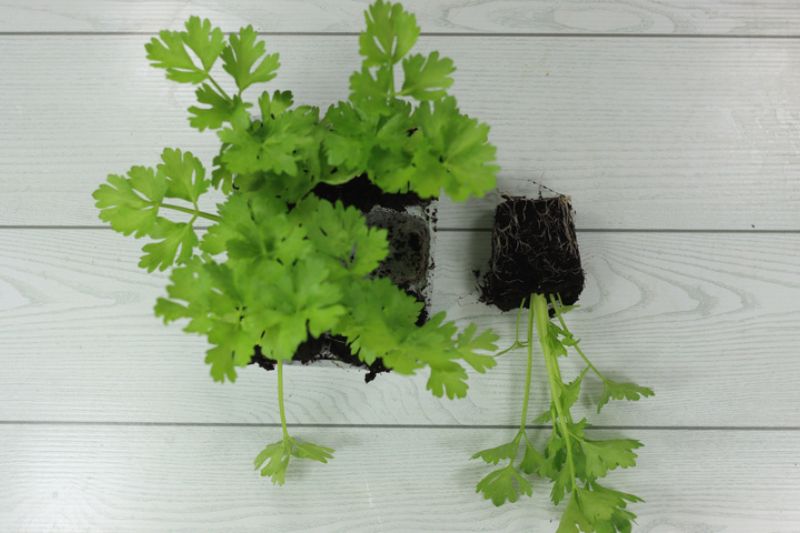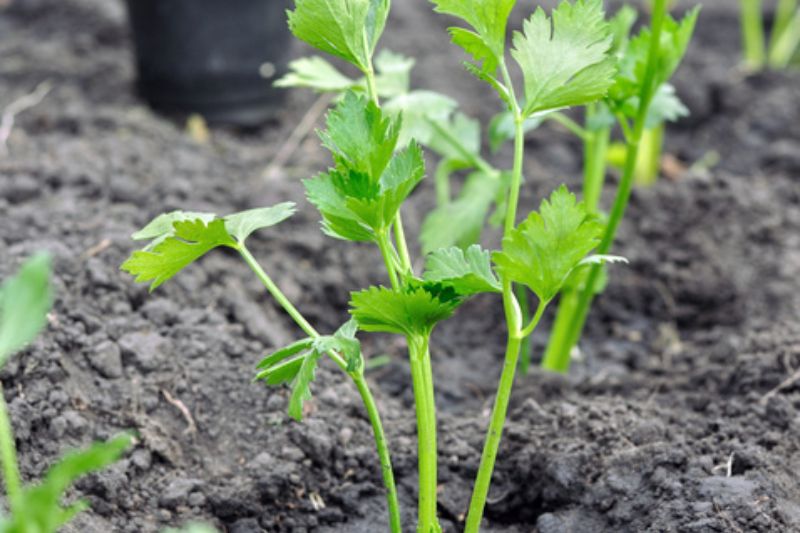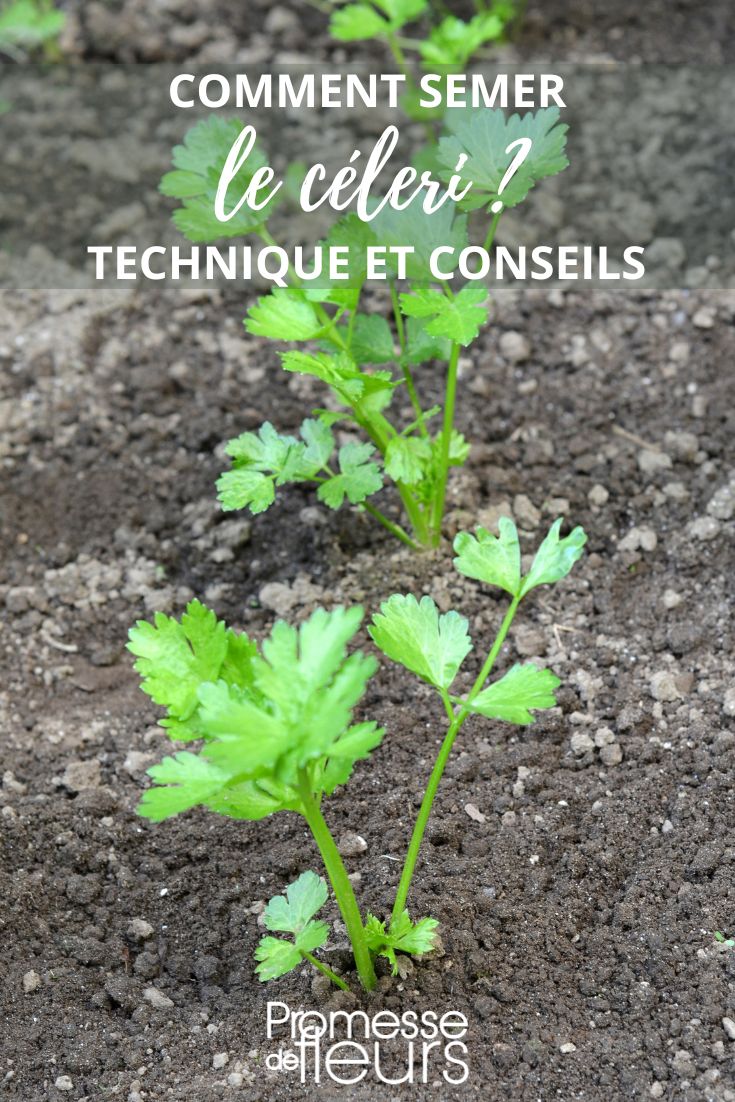Whether stalk or celeriac, celery (Apium graveolens) is a vegetable that deserves a place in every vegetable garden, so distinctive its flavour and with notable nutritional and medicinal virtues. If you can plant buckets directly in open ground from April, sowing your own celery allows you to choose varieties to suit your tastes, save money and enjoy great satisfaction at harvest. However, celery sowing requires a little patience. We explain, step by step, how to carry out celery sowing.
When to sow celery?
Celeriac and stalk celery are sown from February to March under cover. Celery seeds need a soil temperature of at least 20 °C to germinate. Sowing under cover enables seeds to germinate more quickly and young plants to develop properly before being transplanted outdoors.
However, celery seed germination is relatively slow because it requires heat and humidity. That is why sowing is done at home in a warm place or under a heated cover.
Sowing celery under cover
Celery is sown fairly early in the season to allow time for harvest before first frosts. Expect germination to take 10 to 15 days.

Materials needed
- Celery seeds suited to your culinary preferences and growing conditions.
- Seed compost (seed compost).
- Trays, seedling flats, alveolate trays or mini-greenhouses.
- A sprayer for fine watering.
- Plastic film or a transparent cover (facultative) to maintain humidity.
- Labels to record variety name and sowing date.
How to sow celery step by step?
- Fill chosen container with seed compost.
- Press down very lightly the compost to make it slightly firm.
- Dampen evenly with water from the sprayer.
- Sow celery seeds in rows in trays or flats, or 2–3 seeds per cell in alveolate trays or mini-greenhouses.
- Cover with a very thin layer of sieved compost, about 5 mm thick. Celery seeds need plenty of light to germinate. Do not press down.
- Water again with a very fine spray using the sprayer.
- Cover containers with plastic film to retain moisture. For mini-greenhouses, simply put on the lid.
- Place containers in a bright room at 20–22 °C, protected from draughts.
- Keep compost consistently moist by watering regularly with a fine spray.
- Prick out if necessary by removing spindly or leggy seedlings.

Transplanting into buckets
After about 25 days, it is essential to transplant celery seedlings into individual buckets. Wait until seedlings have 3–4 good leaves before transplanting.
Materials needed
- Seed compost or a good-quality multipurpose compost.
- Individual plastic buckets.
- A pencil.
Transplanting young celery plants
- Fill buckets with compost.
- Gently remove young celery plants from cells or gently pull up seedlings sown in rows with your fingers to avoid breaking roots.
- Make small holes with a pencil or finger.
- Plant one to two plants per bucket, burying them up to the level of the first small leaves.
- Firm compost lightly with fingers around plants.
- Water generously with the sprayer to keep compost consistently moist but not waterlogged.
- Place buckets in a bright room at a temperature of at least 20 °C.

About ten days before planting out, around mid-May, you can put buckets outside to harden off. Take them out only on sunny days, to a spot sheltered from wind and draughts. Do not expose them to direct sun, as young seedlings may scorch.
What next?
Planting out will take place two to three months after sowing, between mid-May and the end of June, in cool soil enriched with well-rotted compost or manure, preferably loose and deep. Keep at least 30 cm between plants.

To obtain well-fleshy roots in celeriac or thick midribs in stalk celery, water regularly and fairly abundantly. Equally, it is essential to weed carefully and aerate soil by regular hoeing and weeding. By mulching soil, watering can be reduced and growth of adventive plants will be limited.
Depending on sowing time, celery is harvested from August to November, before frosts.
































Comments